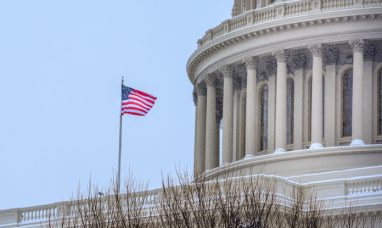The U.S. stock market rally pushed higher on Friday as Wall Street capped another record-setting week. The S&P 500 gained 0.2%, heading for its seventh winning week in the past nine. The Dow Jones Industrial Average rose 167 points, or 0.4%, while the Nasdaq composite added 0.2%. All three indexes are fresh off all-time highs, underscoring bullish momentum across equities.
This week’s climb has been driven by optimism around artificial intelligence (AI), hopes for lower interest rates, and resilient investor sentiment despite political uncertainty.
Jobs Report Delayed by Government Shutdown
Normally, the first Friday of the month brings the closely watched U.S. jobs report. The update shows job creation, layoffs, and unemployment rates, providing key insights into the Federal Reserve’s policy direction.
However, the current government shutdown—now in its third day—has delayed the release. While shutdowns have historically had limited long-term impact on markets, President Donald Trump’s warnings of large-scale federal layoffs have added uncertainty. Still, the U.S. stock market rally has largely shrugged off the disruption so far.
Treasury yields also held steady, with the 10-year yield dipping slightly to 4.09% from 4.10%, signaling calm in the bond market ahead of fresh economic data.
AI Momentum Fuels Tech Sector Gains
Excitement around artificial intelligence remains a major driver of the U.S. stock market rally. This week, Japan’s Hitachi surged 10.3% in Tokyo after signing a memorandum of understanding with OpenAI to advance AI-powered solutions. The move followed OpenAI’s new partnerships with several South Korean companies, sparking further optimism.
In the U.S., tech giants rode the wave. Nvidia (NASDAQ:NVDA) edged up 0.6%, while Broadcom (NASDAQ:AVGO) rose 1.5%. These incremental gains add to the sector’s strong year-to-date performance, as AI spending continues to pour into hardware, chips, and cloud infrastructure.
That said, some analysts caution that the rapid inflow of capital may be inflating a bubble, raising the risk of investor disappointment if earnings fail to keep pace with soaring expectations.
Mixed Performance: Winners and Losers
While many AI-linked stocks continued their upward trajectory, not all companies benefited. Applied Materials (NASDAQ:AMAT) fell 2.5% after warning it would take a $110 million revenue hit in Q4. The decline stems from expanded U.S. Commerce Department restrictions on semiconductor equipment exports to China—a reminder that geopolitical tensions still loom over the industry.
Globally, stock markets were mixed. Japan’s Nikkei 225 jumped 1.9% on Hitachi’s strength, while European indexes showed more muted movement, reflecting regional uncertainties.
Interest Rate Hopes and Stock Market Outlook
Much of the U.S. stock market rally rests on expectations that the Federal Reserve will continue easing interest rates. Investors are betting on a slowdown in job growth and inflation that would allow the Fed to maintain a more accommodative stance.
Lower rates generally boost equities by reducing borrowing costs for companies and lifting valuations for growth stocks. Combined with the AI boom, this has created fertile ground for continued market gains.
Final Take: Is the Stock Market Rally Sustainable?
The U.S. stock market rally shows no signs of slowing as Wall Street powers through political gridlock and delayed economic reports. AI enthusiasm and Fed optimism remain key catalysts, though risks such as export restrictions, policy uncertainty, and potential overvaluation in tech cannot be ignored.
For now, the rally highlights investor confidence in both innovation-driven sectors and the broader U.S. economy. But with markets at all-time highs, a cautious approach may be warranted. Investors should watch closely for upcoming economic data releases once the shutdown ends, as they could shape the Fed’s next moves and set the tone for the rest of the year.
Featured Image – Freepik








